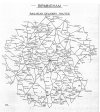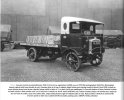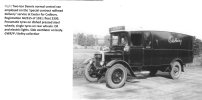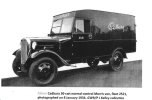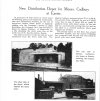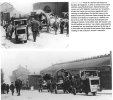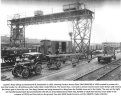Was not sure whether to put this in Road section, but it is to do with railways, and particularly Hockley. The following is all extracted fromTony Atkins "GWR Goods Cartage" (2 vols) pub 2018) . the books are concerned with the company as a whole, and a very large part would describe practices at Hockley, but these extracts are those where Hockley, Birmingham , or in two cases companies from Birmingham, are specifically mentioned.
1. Horse Transport
In 1854 the Birmingham, Wolverhampton % Dudley railway, part of the GWR, opened and soon established a depot at Hockley, where goods could be distributed from the railway by the company itself (using horse cartage). Until 1870 no other part of the GWR organisation provided a delivery service to customers themselves, as opposed to that through agents, but then it was decided to do so throughout the company. In 1883 the Mint stables were opened in Paddington , and by 1889 all fruit & vegetables in London were delivered to markets by GWR themselves. Below is a typical cart used in Birmingham , though there were many types used throughout the company, and described in the book.
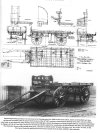
There were accusations in 1867 that horses were overworked or badly treated, but an investigation showed no such thing to occur. However there was criticism of stable provision at Hockley This d provided stabling for 101 horses, with three loose horse boxes, yet there were 130 horses at the site, meaning that 30 horses had to be accommodated at rented sites off the premises. By 1869, of the 297 horses owned by GWR ,120 were at Hockley. The average cost of a horse for GWR was £37.7 shillings, and the average weekly maintenance cost of the horses for the company (including fodder) was £1-0-9½d. with horses being fed 44½ lbs of fodder per day, higher than other operators in the area. This was noted and the provision of fodder reduced with no observed deterioration in performance or health. Horses rather than engines were employed near carpet and woollen stores at Kidderminster and Bilston to reduce fire risk.Up till 1883 the stud at Hockley was larger than that at Paddington, and so the horse superintendant was based there, but when this was reversed Captain Milne, the person concerned, was removed to Paddington. There was a voluntary agreement with the government that horses could be requistioned , and on the outset of war in 1914 the company (as a whole) was obliged to supply 221 for cost price plus 50%.
Below are photos of horses at Hockley:
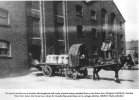
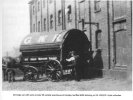
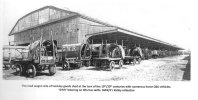
and hauling potatoes underground at Moor St:
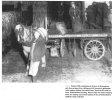
and slightly outside Birmingham, making deliveries in Wolverhampton:
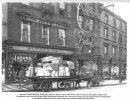
B
1. Horse Transport
In 1854 the Birmingham, Wolverhampton % Dudley railway, part of the GWR, opened and soon established a depot at Hockley, where goods could be distributed from the railway by the company itself (using horse cartage). Until 1870 no other part of the GWR organisation provided a delivery service to customers themselves, as opposed to that through agents, but then it was decided to do so throughout the company. In 1883 the Mint stables were opened in Paddington , and by 1889 all fruit & vegetables in London were delivered to markets by GWR themselves. Below is a typical cart used in Birmingham , though there were many types used throughout the company, and described in the book.

There were accusations in 1867 that horses were overworked or badly treated, but an investigation showed no such thing to occur. However there was criticism of stable provision at Hockley This d provided stabling for 101 horses, with three loose horse boxes, yet there were 130 horses at the site, meaning that 30 horses had to be accommodated at rented sites off the premises. By 1869, of the 297 horses owned by GWR ,120 were at Hockley. The average cost of a horse for GWR was £37.7 shillings, and the average weekly maintenance cost of the horses for the company (including fodder) was £1-0-9½d. with horses being fed 44½ lbs of fodder per day, higher than other operators in the area. This was noted and the provision of fodder reduced with no observed deterioration in performance or health. Horses rather than engines were employed near carpet and woollen stores at Kidderminster and Bilston to reduce fire risk.Up till 1883 the stud at Hockley was larger than that at Paddington, and so the horse superintendant was based there, but when this was reversed Captain Milne, the person concerned, was removed to Paddington. There was a voluntary agreement with the government that horses could be requistioned , and on the outset of war in 1914 the company (as a whole) was obliged to supply 221 for cost price plus 50%.
Below are photos of horses at Hockley:



and hauling potatoes underground at Moor St:

and slightly outside Birmingham, making deliveries in Wolverhampton:

B

